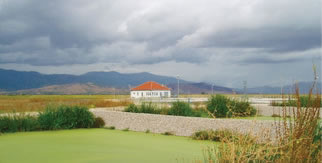
Other Resources
Soft Path Integrated Water Resource Management: Training, Research, and Development Needs
Publication Date: November 2003
Cooperating Institution: Coalition for Alternative Wastewater Treatment (CAWT)
Principal Investigator: Valerie Nelson
Project Budget: n/a
Project Identifier: n/a
DESCRIPTION
On February 19–20, 2002, a workshop was convened in Arlington, Virginia to discuss “Distributed and Nonstructural Water and Wastewater Systems: Charting ‘Soft Paths’ to Integrated Water Resource Management.” The following assessment of problems and opportunities in water resource management was developed.
According to participants in the workshop, the 1972 Clean Water Act and the 1986 Safe Drinking Water Act subsidized expanded construction of sewer and water lines and treatment plants to protect public health and the water quality of rivers, lakes, and coastal waters, and of the nation’s drinking water supply. Drainage systems, channels, and levees built by the U.S. Army Corps of Engineers and by local engineers prevent and control flooding of developed areas.
In spite of localized successes of this capital-intensive “transport water and wastewater away” approach, workshop participants proposed that the country will confront increasingly serious water resource challenges in the coming decades. Projections indicate that the “gap” in local expenditures for repair and replacement of the aging urban water and wastewater point source infrastructure will be in the hundreds of billions of dollars. Nonpoint sources, including urban stormwater and agricultural runoff, contribute to the majority of remaining water quality problems. Widespread drought conditions and depleted aquifers in 2002 also contribute to concerns about looming water supply crises throughout the country.
Workshop participants argued that the timing is right for a major rethinking about whether the traditional capital-intensive engineering solution—to build more pipes at longer distances to transport water and wastewater, to treat water and wastewater at central plants, to build deeper channels and higher levees, and to dig deeper wells—is the appropriate and only response to these challenges.
Distributed and nonstructural approaches that rely on or mimic natural functions of retention and treatment at or near the source can in many instances be less costly, more sustainable solutions for new infrastructure in developing areas. In existing urban areas, a blending of the traditional “hard path” and the newer “soft path” approaches might be the optimal solution.
This report summarizes the discussions and outlines the training, research, and development recommendations of the workshop, which included experts who are well-versed in both traditional centralized and newer distributed approaches and technologies.
Associated Documents
Final Report

